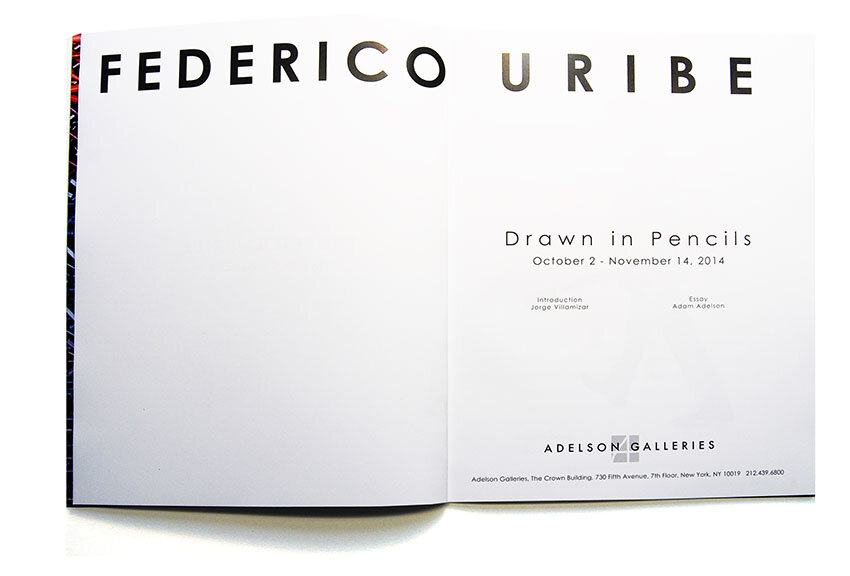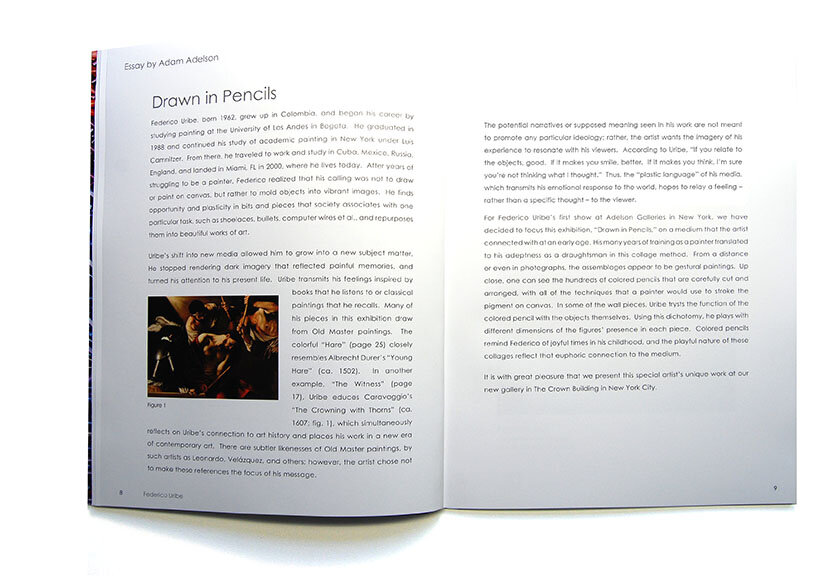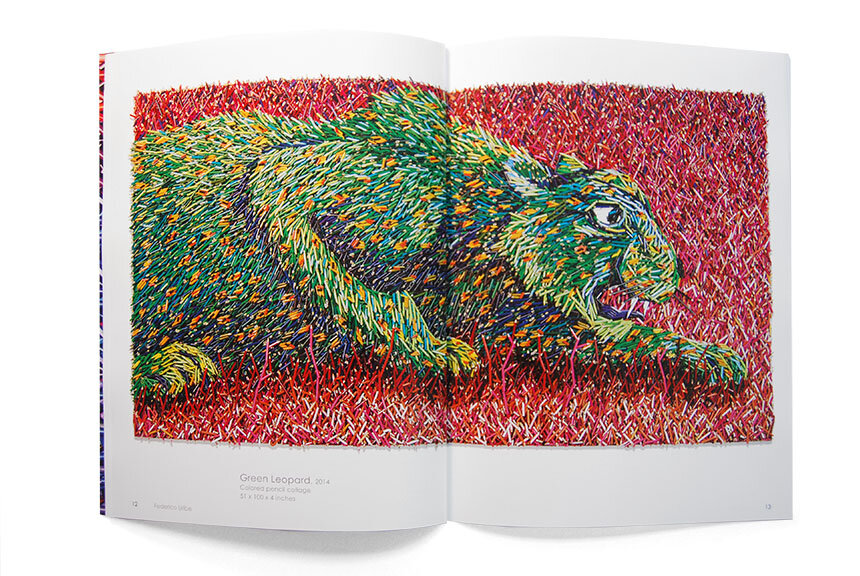Federico Uribe: Drawn in Pencils
Introduction by Jorge Villamizar
Essay by Adam Adelson
Published by Adelson Galleries, 2014
Softcover, 36 pages, fully illustrated throughout
Federico Uribe, born 1962, grew up in Colombia, and began his career by studying painting at the University of Los Andes in Bogota. He graduated in 1988 and continued his study of academic painting in New York under Luis Camnitzer. From there, he traveled to work and study in Cuba, Mexico, Russia, England, and landed in Miami, FL in 2000, where he lives today. After years of struggling to be a painter, Federico realized that his calling was not to draw or paint on canvas, but rather to mold objects into vibrant images. He finds opportunity and plasticity in bits and pieces that society associates with one particular task, such as shoelaces, bullets, computer wires et al., and repurposes them into beautiful works of art.
Uribe’s shift into new media allowed him to grow into a new subject matter. He stopped rendering dark imagery that reflected painful memories, and turned his attention to his present life. Uribe transmits his feelings inspired by books that he listens to or classical paintings that he recalls. Many of his pieces in this exhibition draw from Old Master paintings. The colorful “Hare” (page 27) closely resembles Albrecht Durer’s “Young Hare” (ca. 1502). In another example, “The Witness” (page 19), Uribe educes Caravaggio’s “The Crowning with Thorns” (ca. 1607; fig. 1), which simultaneously reflects on Uribe’s connection to art history and places his work in a new era of contemporary art. There are subtler likenesses of Old Master paintings, by such artists as Leonardo, Velázquez, and others; however, the artist chose not to make these references the focus of his message.
The potential narratives or supposed meaning seen in his work are not meant to promote any particular ideology; rather, the artist wants the imagery of his experience to resonate with his viewers. According to Uribe, “If you relate to the objects, good. If it makes you smile, better. If it makes you think, I’m sure you’re not thinking what I thought.” Thus, the “plastic language” of his media, which transmits his emotional response to the world, hopes to relay a feeling – rather than a specific thought – to the viewer.
For Federico Uribe’s first show at Adelson Galleries in New York, we have decided to focus this exhibition, “Drawn in Pencils,” on a medium that the artist connected with at an early age. His many years of training as a painter translated to his adeptness as a draughtsman in this collage method. From a distance or even in photographs, the assemblages appear to be gestural paintings. Up close, one can see the hundreds of colored pencils that are carefully cut and arranged, with all of the techniques that a painter would use to stroke the pigment on canvas. In some of the wall pieces, Uribe trysts the function of the colored pencil with the objects themselves. Using this dichotomy, he plays with different dimensions of the figures’ presence in each piece. Colored pencils remind Federico of joyful times in his childhood, and the playful nature of these collages reflect that euphoric connection to the medium.
It is with great pleasure that we present this special artist’s unique work at our new gallery in The Crown Building in New York City.
Adam Adelson




